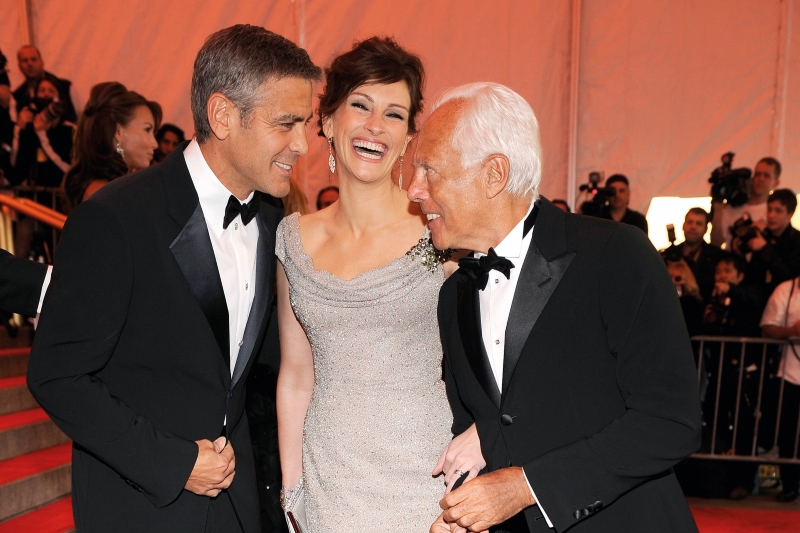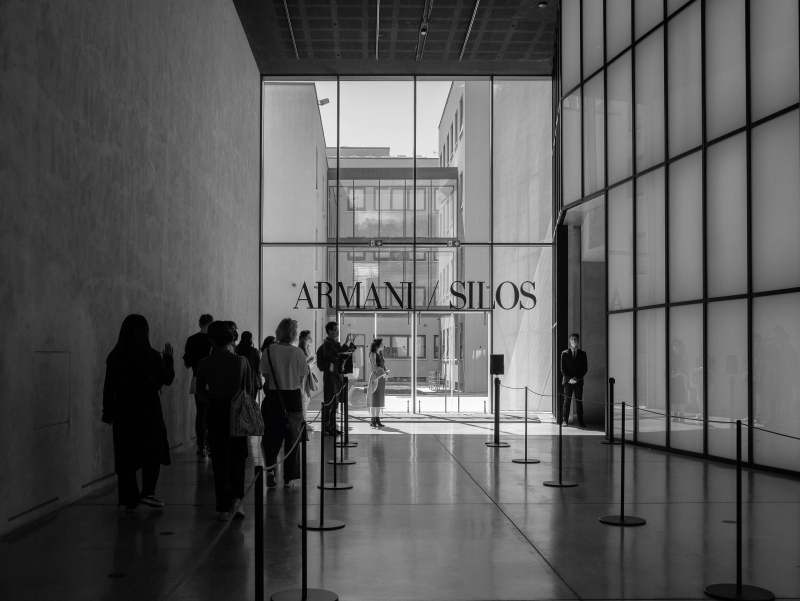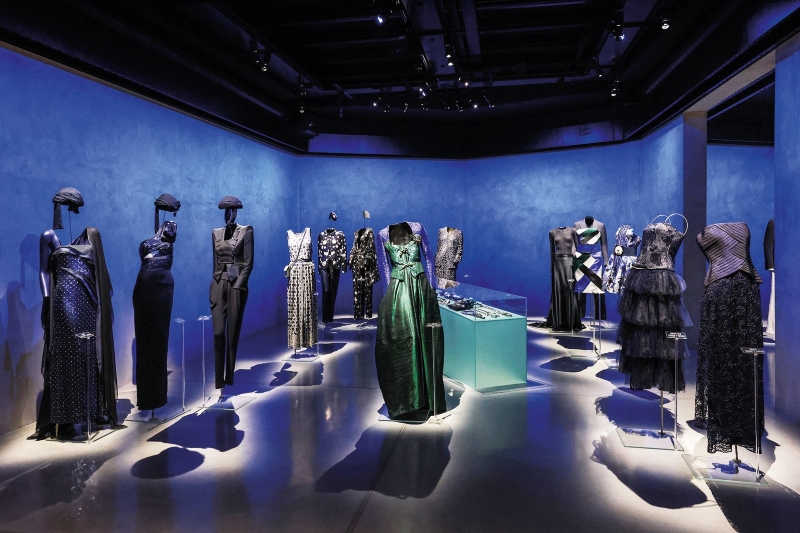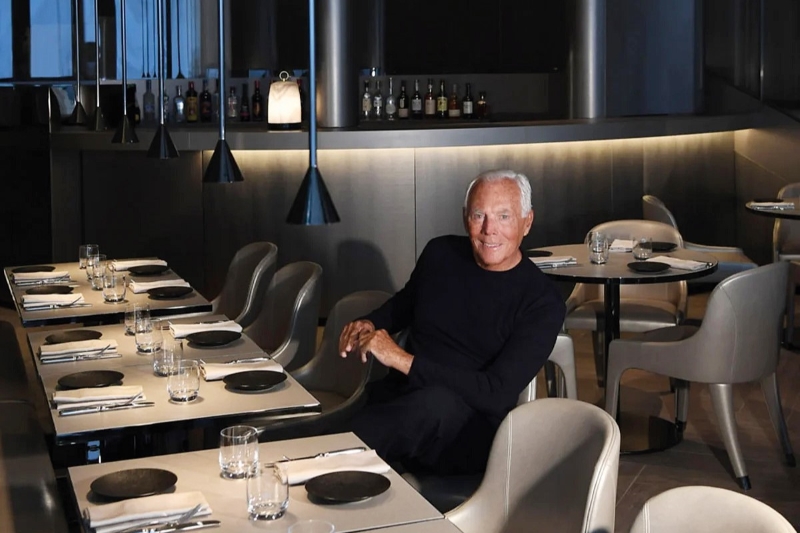
Armani at ease in Antigua, the Caribbean (Photo: Giorgio Armani)
The fashion world is certainly not short on icons but few dominate as discreetly yet powerfully as Giorgio Armani does. From a simple childhood in the small town of Piacenza, on the banks of the River Po, he went on to grow his eponymous label into a veritable billion-dollar empire that encompasses not just fashion but also hotels, furniture, fragrances — the accidental evangelist of an effortlessly elegant way of life that celebrates dressing with style and a sense of practicality.
The indefatigable Armani, who turned 90 on July 11 and is himself one of Italy’s richest men, remains a rare bird — influential yet independent — in a sea of conglomerate-owned maisons. His brand, which he co-founded in 1975, approaches its golden jubilee next year and talk of succession planning is still tightly kept under wraps. And, yet, for the air of mystery surrounding its future, the present is still where it matters most for the mogul, whose raison d’être is not to get attention for those who don his clothes but, rather, for the wearers themselves to be remembered.
Options: What is your definition of a well-dressed woman?
Giorgio Armani: One who is not trying too hard. It’s all about elegance, and elegance is about simplicity. It was my mother who taught me a great lesson: “If you wish to create beauty, only do what is necessary, and no more.”
And who is the Armani woman?
She is modern, active, dynamic and someone who believes in holding something back. There is often an alluring air of mystery surrounding an elegant woman because not everything is instantly apparent and exposed.
You are also blessed with a wonderful, long life. Would you be able to identify the happiest moments of each of your last eight decades?
I don’t think I can be quite so specific, but I’ll give you some highlights. Moving to Milan in the late 1950s, where I discovered the magic of the cinema — particularly the Italian neorealists; getting my first job in a design studio with Nino Cerruti in the 1960s; commencing my fruitful partnership with photographer Aldo Fallai in 1977, with whom I created the enduring image of the Armani man and woman; being featured on the cover of TIME magazine in 1982, which felt like an acknowledgement of all the effort I had put into my collections.
Some of the cinema wardrobes I have worked on have also given me great pleasure. American Gigolo, of course, was the film that brought my style to the world’s attention in 1980, but then so did producing costumes for The Untouchables, Oceans Thirteen, Inglourious Basterds, The Great Beauty and many more.
My appearance on the other side of the camera in Made in Milan, the documentary that Martin Scorsese made about me and my creative process and was released in 1990; receiving the inaugural Rodeo Drive Walk of Style Award in 2003; when I opened the Armani/Silos, my permanent exhibition and educational space in Milan in 2015; my first One Night Only event in London in 2006; the retrospective of my creations that the Guggenheim Museum staged in 2000 in New York and which then toured around the world... But there are many, many more.
george_clooney_julia_roberts_giorgio_armani.jpg

Tell us also what we can expect from a visit to Armani/Silos.
The idea for it came to me as I was thinking about our 40th anniversary, which was in 2015, and how this presented the perfect opportunity to reflect on my career and how it has been influenced by changes in culture and society. I felt the need to talk about my work by offering the opportunity to people to become immersed in a professional career that can provide inspiration and ideas for others. This space is for the city of Milan — my hometown — and fans of fashion, both students and the general public.
I wanted to host temporary exhibitions here, and there is also an interactive digital area that is specifically designed to house a comprehensive archive of my work and working methods — with sketches, photography, videos and advertising campaigns. Silos is not intended to be merely a celebration of my work but instead aims to be a container of broader ideas and projects. The real intention is that Armani/Silos should stand as a place to entertain but also educate future generations of fashion fans and would-be designers. In the future, I would like the Silos to continue hosting specifically organised activities dedicated to the arts and related fields.
What is the story behind the design of the museum’s logo?
It’s actually a reference to the original function of the building. It was built in 1950 and used for grain storage — so, literally: silos. It contained food, which is essential for life, and, for me, clothing is a part of life, too. I thought it was perfect for the exhibition space concept I had in mind — open and undogmatic. My Silos is a place that stores vital material — preserving creativity and offering it as an inspiration for the future. It is not only a space of conservation and protection of my brand’s creative heritage, but also somewhere that, I hope, will fuel and enhance creativity, research and study.
What’s showing there right now?
The Armani/Silos combines different exhibitions and functions, from the significant collection of my designs to temporary exhibits I stage for other creatives, to an educational facility. With Armani/Silos, I offer a different point of view, and it is for this reason that I wanted it to be a research centre rotating around fashion and design, and completed by an association with photography and cinema, which are an integral part of my vision of style, and which complement very well the idea of a lively exhibition space.
The permanent collection is a wide-ranging exhibition about my work, in the broadest sense, not in chronological order, but focusing on a number of themes that have always been key to what I do. These range from travel to glamour, precisely to show the consistency and evolution of my work; my aesthetic grows increasingly eccentric as you move up from one floor to the next, and then it blooms into a section devoted to embroidery and light on the top floor.
The current temporary show, Aldo Fallai per Giorgio Armani 1977-2021, which opened to the public last December and runs until Aug 11 this year, is the story of almost 30 years of uninterrupted artistic dialogue between Giorgio Armani and Aldo Fallai, exploring the boundaries of a unique collaboration that defined the very essence of an aesthetic that has made its way into the collective imagination.
photo_by_adriano_on_unsplash.jpg

If a visitor is pressed for time and can see only five things, what would you suggest?
As I often say, I struggle to choose favourite pieces of clothing or accessories — I am tied to each of them and each of them is associated with different memories. As regards the Silos, part of the pleasure for a visitor is experiencing the space. I really like the play on perspectives that I was able to create within it, the different views of the rooms that can be appreciated, thanks to the architectural openings. It almost gives the impression of being in front of living pictures.
I value the permanent exhibition as a whole because it dispels the myth of an all-greige, understated Armani and emphasises the wealth of cultural references in my work, revealing its absolute timelessness. I would also pay attention to the prevalence of unstructured tailoring (for both men and women). Then, consider some of the more whimsical pieces, which might challenge your conventional view of my work.
But, principally, note how all of the collections feature the same essential style, the same quest for purity, the same consistency. Like all good exhibition spaces, the Silos should provoke a personal response in the visitor. There will be many things there to engage your interest, so five things will not really do the visit justice.
If you can spend [more time] and explore according to your individual enthusiasms and passions, you will likely take away an experience with a very personal emphasis. There is the opportunity here to learn about fashion, culture, aesthetics, history and, yes, of course, a designer’s singular vision. A visit to Armani/Silos should feel like having a conversation about design and its role in our lives. Essentially, I hope visitors will leave stimulated. And if they are studying, I really hope they will go away encouraged to create themselves!
Did you work with a particular architect or design studio for the space?
Undoubtedly, the architecture of the Silos reflects my aesthetic vision, which I apply to everything I do. I wanted a rational form that offered order, rigour and functionality, and that was fully in line with the nature of the site. I retained the curious shape of the original building, which resembles a beehive — I liked this, as it stands as a metaphor for hard work. The building is made of grey concrete and divided into four floors. It is simple and functional, so as not to detract from the exhibits.
I have been fully involved with my design and interiors and architecture studios, following each individual step, evaluating materials and colours, deciding how the garments will be displayed and the organisation of spaces floor by floor. My concern was to play with space and volume rather than decoration — in a sense, this mirrors my approach to fashion.
armani-silos-voyage-4-courtesy-of-giorgio-armani.jpg

So many people dream of achieving success in fashion, yet only a few do, while even fewer manage to retain their position for such a long time. Why do you think the house of Armani has stayed so successful? What advice would you give to young people who want to emulate your path?
It comes down to a few key factors. One is consistency. I have a very clear vision of what my style is and I stick to this. I do not follow trends but stay true to my inner design compass. This means my team and my customers do not get confused and understand exactly what to expect from me. Then, there is my conviction that a fashion designer should serve his customers.
Fashion is about creating pieces people wear in their real lives; it is not about editorial shoots, catwalks and the red carpet. Those things are great, of course, and generate good publicity, but if people are not wearing your clothes in the ‘real’ world, you cannot say you are originating true fashion. This has meant that my clothes have had appeal to many around the world who are helped to look their best by wearing Armani. As for advice: Find your voice; believe in yourself; stick to your vision; and work hard.
You had wanted to become a doctor originally. Do you have any regrets in not pursuing that path?
I don’t believe in regrets and I can answer truthfully that I absolutely am not sorry in my decision to abandon medical studies. I realised very quickly that it was not the path for me and that the idea had been prompted by a romantic notion of what being a doctor would be.
You also mentioned preferring to listen and observe via open expression. What are the three most important things you ever learnt while quietly listening and observing?
One: See and understand how and why people actually look good in clothes. This comes down to people feeling comfortable as well as looking aesthetically pleasing. Two: Comfort equals ease and confidence. And confidence makes everyone look more attractive. Three: Clothes must be functional as well as beautiful. A jacket, for instance, should be unrestrictive and allow you to move.
We recently visited Brera for the first time and the guide enthusiastically exclaimed it as the territory of Armani. What do you think about that statement, and what are your thoughts on its reputation as Milan’s ultimate design district?
Well, I suppose I have been in Brera for a number of years, and this is very much my home and the headquarters of my business. I live in a converted palazzo that contains both my studio and living quarters. I like to fill them with souvenirs from my travels; I think this makes it a home. And gathering objects I love around me is, I feel, in keeping with the design credentials of the district, which has seen something of a revival over the past few years.
Since 1984, I have had a large advertising billboard on a wall in Via Broletto in Brera that has become a sort of local landmark. It really is huge and I have shown many Emporio Armani images here, so it has almost become an Armani destination. Brera is also home to the Pinacoteca di Brera. A few years back, I supported an exhibition there of the work of the Renaissance artist and architect Donato Bramante, whom I discovered as a boy from Piacenza wandering around the ‘big city’ on a Sunday when I happened upon the small Church of San Satiro, attributed to Bramante himself, which has a famous trompe l’oeil false apse.
first_giorgio_armani_restaurant_in_paris.jpg

Besides the Duomo, Milan is also anchored by La Rinascente — another long-standing success story. What did working there teach you and what are some of your favourite memories?
One of my favourite memories is of the way in which I got my job there. I knew that the store needed a catalogue and I convinced them I could produce one. I had never gone to art school or photography school, and when my sister Rosanna and I went to see the woman in charge of the project, I showed her photographs that I had taken of my sister —photographs that I freely admit had neither technique nor inspiration. They were tossed out, of course, but I ended up being offered a job and embarking on my career in fashion.
Initially, I helped with window dressing and the architectural firms that installed exhibits, and then I moved to the buying department. I have fond memories of that time and I surely did learn a lot — enough to secure a job working with Nino Cerruti as a fashion stylist.
In a world where department stores are fast disappearing, why do you think La Rinascente remains?
A great department store understands its customers and makes the shopping experience unique for them as well as convenient. I believe La Rinascente fully understands people and what they want — a selection of goods that suits their lives. Milan is a global city, but La Rinascente, unlike many department stores around the world that cater primarily for tourists, is still a place where locals shop. Its connection with the city and its inhabitants is, therefore, very strong.
Armani has transcended fashion to include dolci, fiori and more. Which element would you like to take on and give it your inimitable touch next?
I always had the dream of creating an Armani lifestyle and, of the areas outside clothing I have explored, perhaps the most exciting and challenging have been interiors and then the extension from there into actual functioning spaces for hospitality like hotels and restaurants. I never know where I will turn to next until the inspiration takes me. But let’s just say nothing is ever off the table.
Tell me a little bit about your childhood in Piacenza.
I grew up with my brother and sister in Piacenza, on the banks of the River Po. I remember it as a peaceful town, not that far from Milan, a city whose endlessly fascinating presence could always be felt. My mother and father met on the stage of the Teatro dei Filodrammatici in Piacenza, when they were both acting in Henrik Ibsen’s A Doll’s House, but they hardly ever mentioned their artistic past, perhaps out of a sense of modesty.
The theatre was to some extent in my family’s blood — my grandfather on my father’s side had a small workshop that produced wigs for the Teatro Municipale, our own somewhat smaller version of Milan’s Teatro alla Scala. I was absolutely mesmerised by the atmosphere of the theatre. Even though we had little money, it felt like we lived well — my mother always made sure my brother, sister and I were well dressed, and during the war she would gather food for us to eat from generous friends who lived in the countryside, hiding it under her dress and pretending she was pregnant to get past the German patrols.
What are the books that have shaped your life most?
When I was a kid, I read adventure stories and among the first was The Tigers of Mompracem by Emilio Salgari. This type of escapist story appealed to my fertile imagination. The Citadel, by A J Cronin, which told of the work of a doctor in Wales in the UK, was a novel that had such a profound effect on me that I was determined to become a doctor, too. Since then, I’ve read many books and I particularly like biographies and the like. One that stands out is Memoirs of Hadrian, a novel about the Roman emperor by Marguerite Yourcenar.
Next year marks 50 years of your brand. How would you like to celebrate the momentous occasion?
In the same way I always celebrate milestones: by looking to the future. I like to think ahead — to the next chapter, to the next challenge.
This article first appeared on July 8, 2024 in The Edge Malaysia.


